The Caribbean's largest English-speaking island Jamaica, is a feast of flavours, and the familiar fare of rum, reggae, jerk chicken, sugary sand beaches, aquamarine waters, towering palms and cheek-caressing trade winds are merely the appetisers – for the avid golfer there’s top shelf golf sunny side up.
This was the scene. Paul and Andrew Marshall were at one of the Caribbean’s most stunning golf courses, carved out of 600 acres of lush greenery and rolling countryside, with panoramic views of the Caribbean Sea from 16 of its 18 holes. Golf clubs, balls, scorecard, tees, chilled beverages and snacks were neatly arranged in our cart as we surveyed the surrounding landscape. “Yeah man. The line is the large tree on the horizon, just swing nice and smooth,” said our caddy at the White Witch’s stunning 550-yard, par-5 opening hole. For two pale English golfers who hadn’t touched a golf club throughout the winter months, it was pure heaven.

The par-71, 6,748-yard course was so named by its creators, golf course architects Robert von Hagge and Rick Baril, in reference to Annie Palmer, the notorious ‘White Witch,’ who was mistress of Rose Hall Plantation in the early 19th Century on which the course is built. She was purported to be beautiful and beguiling and to have murdered three unsuspecting husbands.
The course certainly casts a spell, as it spills up and down the hills high above the sea. Many holes demand long and scary carries over chasms filled with rocks and two of the par-3 holes feature stomach-dropping shots from elevated tees to water-fronted greens far below.
Said head golf professional Mike Cole, “The White Witch is a course that will give you a different experience each time you play, and we have done that by creating multiple tees throughout. Whereas the low handicapper might have to carry a yawning ravine to reach the green, there are also tees allowing the shorter hitter to get there as well. The topography is unique, making each hole memorable and distinctive in its own right.”
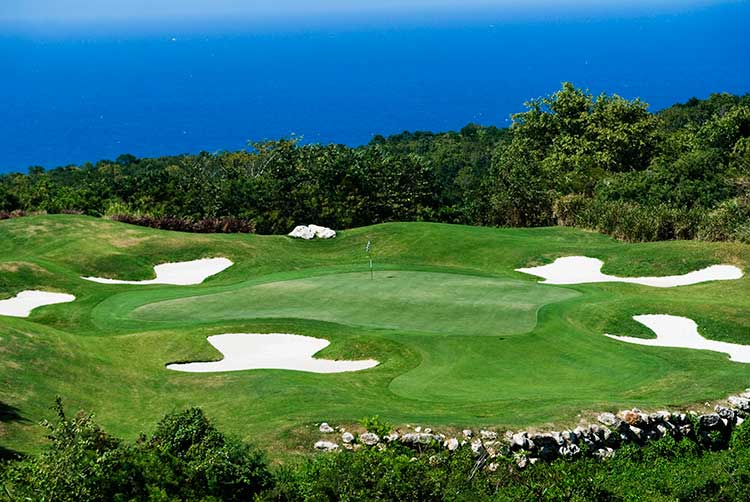
From pewter golf bag tags inscribed with each player’s name and a driving range to die for, to luxurious changing rooms and well-trained, white-suited caddies known here as golf concierges, everything about the White Witch is decidedly top-end.
At every course the caddies add their own local flavour and at the White Witch it’s no exception. The golf concierges are a unique service that provides traditional caddy services in addition to other services such as restaurant reservations, ordering flowers for loved ones or making spa appointments. “Their knowledge of the golf course includes everything needed to negotiate the gusty winds, drastic elevation changes and deceptive greens,” Mike told us, as we enjoyed some frosty beers after our round. The elegant dining veranda of the clubhouse provides a superb and fitting 19th hole with views of the first tee and the sparkling turquoise waters of the Caribbean Sea beyond.
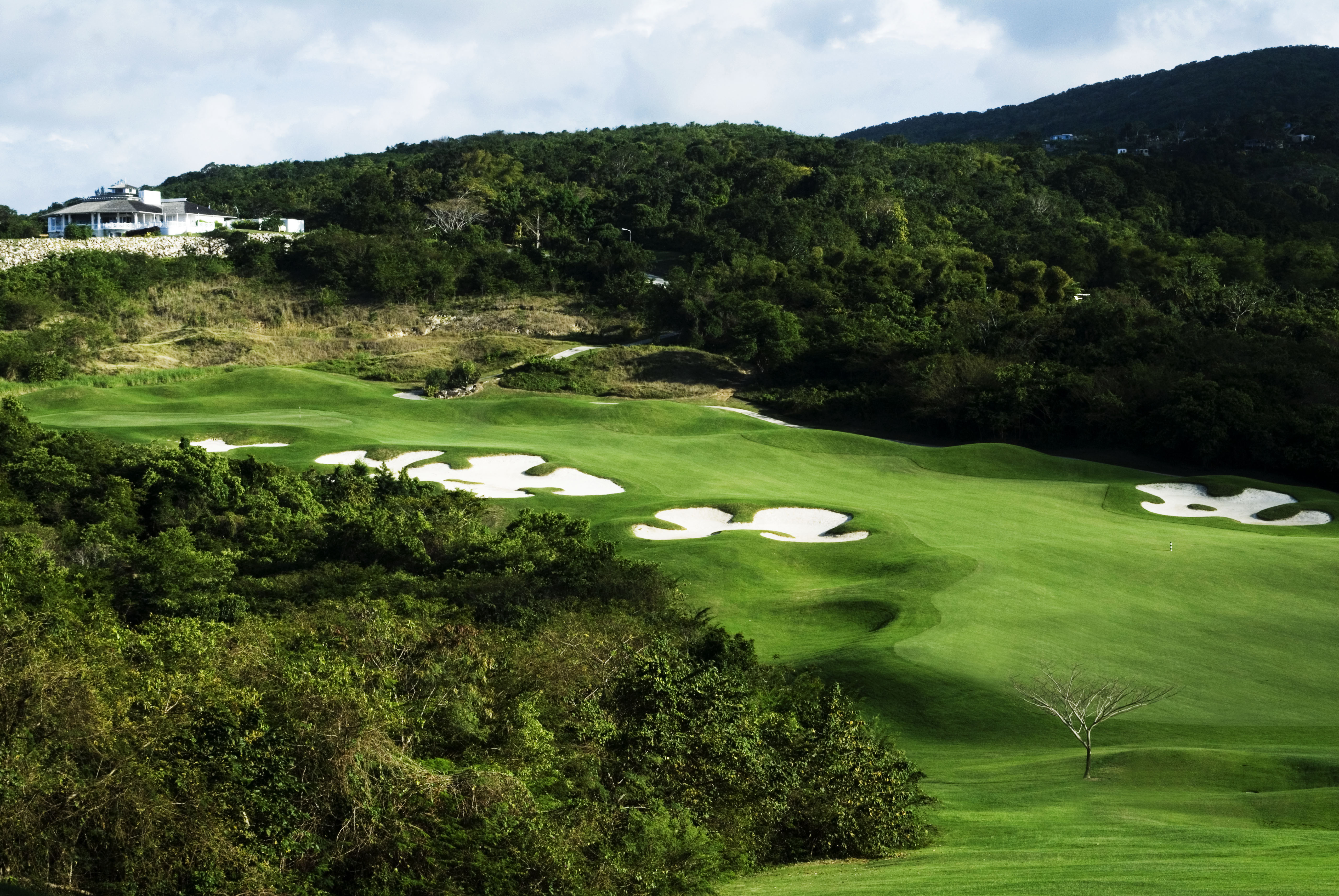
The White Witch is situated on Jamaica’s north coast. It is one member of a quartet of premier courses that includes Half Moon Golf Course, the Tryall Club and Cinnamon Hill Golf Course, all clustered around the elite enclave of Rose Hall near Montego Bay. Although there are another eight courses on the island, including the historic 9-hole Manchester Club, founded in 1865 and the oldest golf course in the Western Hemisphere, these four are the most varied and distinctive and provide a good focus for a Jamaican golf trip.

The following morning we had a tee time with Director of Golf, Ewan Peebles, at Half Moon – a tropical parkland layout designed by Robert Trent Jones Senior and located in the exquisite resort of Half Moon. For Scottish born Ewan, a qualified PGA-pro since 2001 and a professional golfer for more than a dozen years, each course in the Rose Hall area holds a certain charm. “To me, Half Moon is the most user-friendly of the bunch and is more open and forgiving,” he said, after just missing a birdie putt on the par-5 first.
Half Moon’s signature hole is the relatively short, 362-yard par-4 fourth, which offers a choice of going for the green in one or hitting an iron down the open side to the green. It is guarded by a water hazard to the right. My caddy, Orville Christie known locally as the Jamaican John Daly, decided to tee one up and have a crack, but alas he pushed it to the right.
“The stretch of holes from 6 to 9, which are three long par-4s and a long par-3 into the prevailing wind, is the most difficult section of the golf course,“ said Ewan. “If you get through this section without a disaster you have the chance of making a reasonable score.” Despite expert caddy advice on reading the nuances of the confusing Bermuda grass greens and a few three putts, we managed to hold it all together until holing out at the last. After we tipped the excellent caddies and enjoyed a beverage at the 19th hole, we headed back to Half Moon Resort to enjoy the facilities and an afternoon siesta.
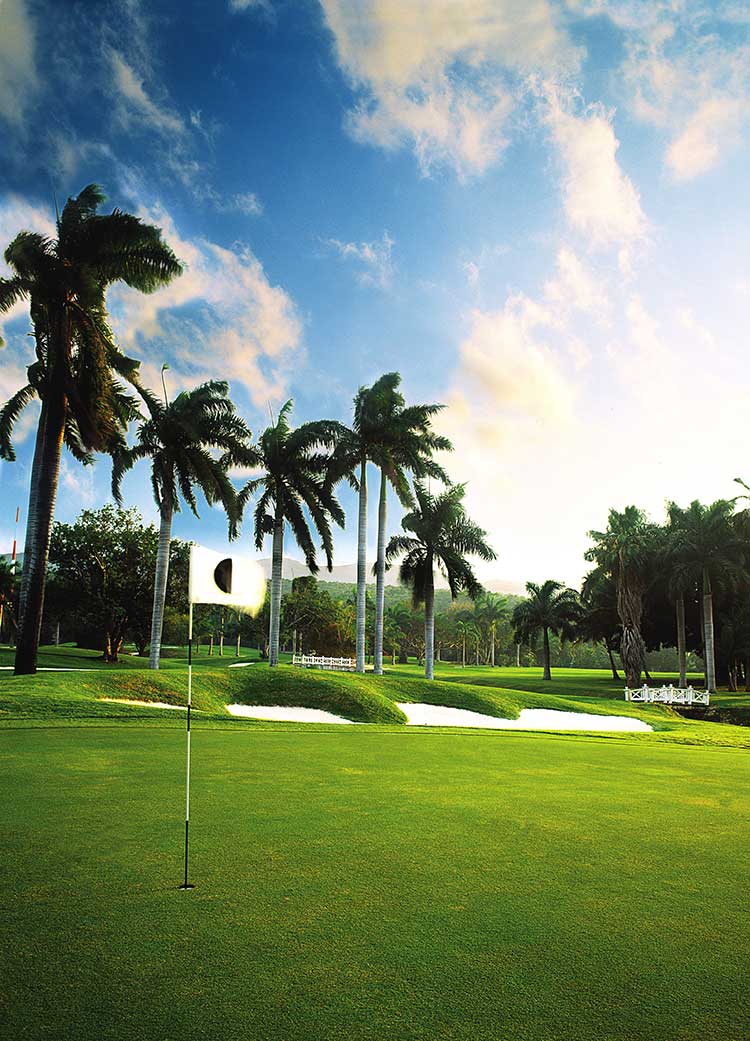
Half Moon is one of the world’s best resorts and is so extensive that guests are provided with a map and golf cart to help them get around. Celebrity visitors over the years have included Clark Gable, Prince Charles and more recently David Bowie and Wayne Rooney. Georgian-style buildings are scattered throughout the lush tropical grounds, offering casually elegant accommodation, many with ocean views. In addition, 32 villas with private pool, which come with their own butler, cook and housekeeper, provide the perfect luxury home base for golfers.
Besides the golf, there’s tennis, a fitness centre, horseback riding and the award-winning Fern Tree Spa, the perfect place to unwind. Of particular interest to golfers are the one-hour stress management program, ‘Mental Fitness for Golf’ and the ‘Up to Par’ massage, specially created to strengthen, stretch and stimulate muscles that are particularly important to golfers. It combines a variety of techniques including passive stretching, deep tissue massage and the use of heated golf balls. This is a wonderful treatment for the pre and post golf game and well recommended.
Jamaican Jerk
Eating and drinking is an important part of any golfing trip and Jamaican sspecialities run the gamut from mouth-watering curried goat and mutton to delightful national dishes such as salt fish, ackee, escoveitch fish, peanut porridge and chicken or beef patties (around one million of these Cornish pasty-like snacks are eaten by Jamaicans every day). While Half Moon’s collection of restaurants offer excellent dining, we soon discovered that you’re just as likely to have a great culinary experience by eating local style - and here that means one thing, Jamaica’s trademark dish of jerk chicken or pork. Although there are thousands of jerk centres, - as they are known - in every village and town and at almost every crossroads or street corner, there’s only one place to go…
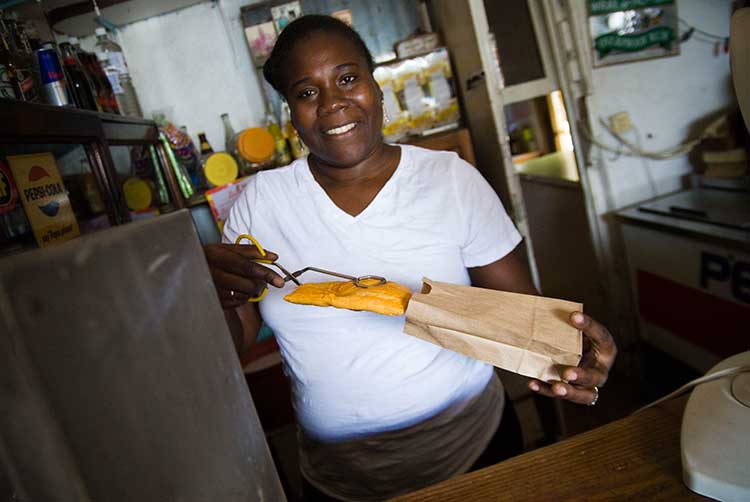
When we visited Scotchies on the outskirts of Montego Bay one Friday afternoon, the queue inside was already a dozen long. A reggae soundtrack combined with delicious aromas that wafted on the balmy tropical breeze. A cool mix of locals and visitors rubbed shoulders at rustic tables, opening tin foil parcels of tasty jerk chicken and pork accompanied by roasted breadfruit or sweet potato and washed down with a Red Stripe beer, the island’s tipple of choice.
Scotchies was started several years ago by Tony Rerrie from the back of his pick up truck, and has since become an island institution. “Everyone knows about Scotchies and there’s no doubt it’s the best jerk centre in Jamaica,” said manager Kim Cooper. “On Sunday afternoons we usually get a big crowd of golfers stopping by and Mike Cole, Ewan Peebles and Rob Ames are all regulars here. “
Kim showed us round the back, where rows of chickens were splayed flat and whole backs of pig sizzled in jerk marinade over a low fire of pimento wood which provides a strong distinctive smoky flavour to the meat. Jerk chicken is believed to have been conceived when the Maroons introduced African meat cooking techniques to Jamaica. These were combined with native Jamaican ingredients and seasonings used by the Arawak. The method of smoking meat for a long period of time served two practical purposes - keeping insects away from the raw meat and preserving it for longer once it has been cooked. Like most places, the recipe for jerk sauce at Scotchies is a closely guarded secret, but they usually contain peppers, onions, pimento, ginger and chili.
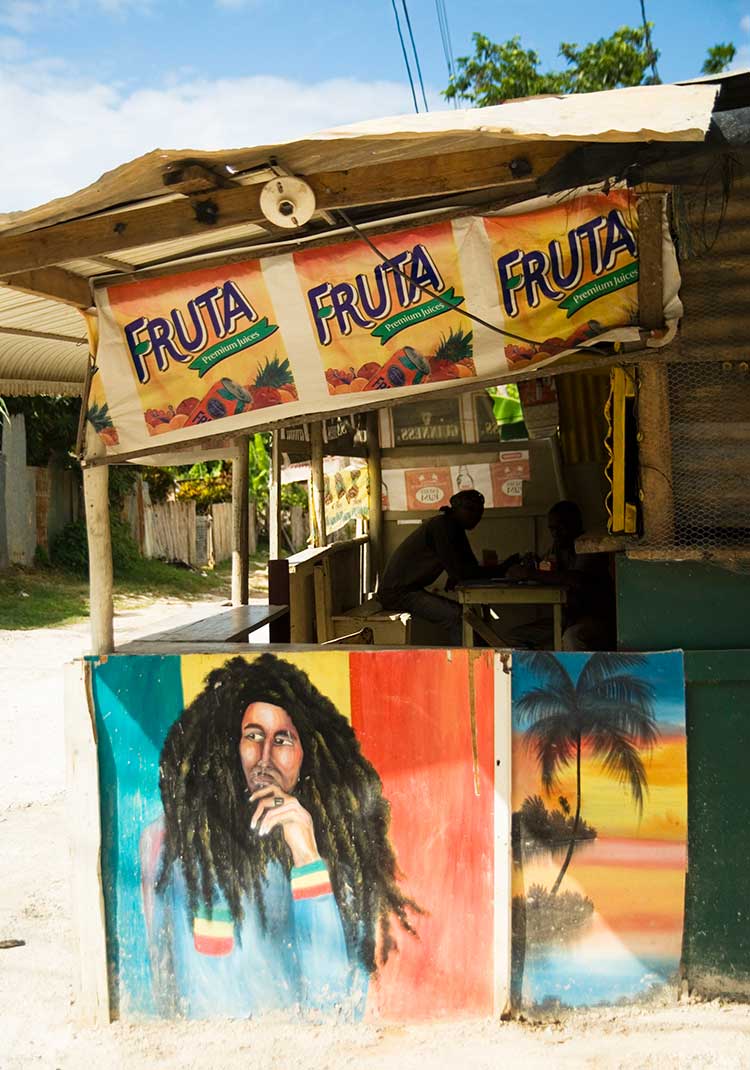
Another good eating option is The Native in Montego Bay, serving up some of the finest Jamaican dishes - from divine smoked marlin to its fabulous boonoonoonoos native platter which has a little bit of everything, including spicy meats, fish and vegetables. Round off your meal with a slice of smooth creamy coconut pie or for something more local opt for duckanoo (sweet dumpling of cornmeal, coconut and banana wrapped in a banana leaf and steamed).
Jamaican Greens
After the Jamaican jerk, it was back to the Jamaican greens as we tackled the final two courses of our north-coast quartet – the Tryall Club and Cinnamon Hill Golf Course. Located 12 miles from Montego Bay, the Tryall Club is a 6,772-yard Ralph Plummer beauty built in 1960 and features spectacular ocean panoramas and exotic tree-lined fairways, with nine level holes by the sea and nine rolling holes in the hills. It has hosted 13 international events including the prestigious Johnnie Walker World Championship and Shell's Wonderful World of Golf. Look out for the tee shot through the stone pillars of a historic aqueduct, part of a former sugar plantation and the par-3 fourth, with a shot over Flint River to a devilish putting surface.

By contrast to Half Moon and the Tryall Club, Cinnamon Hill offers a real variety of terrain. The gently rolling front nine of the 6,798-yard par 71, Robert von Hagge and Rick Baril layout opens under the gaze of the 18th-century Rose Hall Great House, then rambles past the walled graveyard of Elizabeth Barrett Browning's family and down to the ocean. Holes 5 and 6 are so close to the water that a cranky sea breeze can easily whip your ball into the deep. “Number 5 is a standout hole that will appeal to connoisseurs of the game, “ said Director of Golf, Robert Ames, brother of PGA tour professional Stephen Ames, who was keeping us company for our round. “It’s aptly named Majestic Blue and it’s a big test. You tee off facing the ocean on this dogleg left downhill par-4, which plays anything from 453 to 420 yards. Watch out though, the ocean borders the last 250-yards of narrow fairway on the right and the green is alongside the beach.”
In contrast, the back nine takes to the remote hills of the plantation, making its way through narrow canyons and across deep chasms with a handful of elevated tee shots. Johnny Cash’s mansion is right next to the 14th fairway and contains much of his memorabilia since the 70s. The par-3 fifteenth drops dramatically to a green next to a picturesque waterfall where scenes from the James Bond movie Live and Let Die were filmed.
Robert was great company and kept us nicely entertained with facts about the course, his planned changes, stories about caddying for Stephen during his famous victory at the Player’s Championship in 2006, and even a few much needed golf lessons thrown into the mix. I’ve never forgotten his advice for a low and slow takeaway on my drives and still use it to this day.
The late afternoon sun cast long shadows across the final green of Cinnamon Hill, defining every undulation, bump and hollow. ‘’Hope you’ve enjoyed it lads, “said Rob, after we all holed out. “Maybe I’ll catch you later at Scotchies for some jerk chicken and a beer?”
FACT FILE
WHERE TO STAY
Half Moon Resort: www.halfmoon.rockresorts.com
WHERE TO PLAY
White Witch: www.whitewitchgolf.com
Half Moon Golf Course: www.rosehall.com
Cinnamon Hill Golf Course: www.rosehall.com
The Tryall Club: www.tryallclub.com
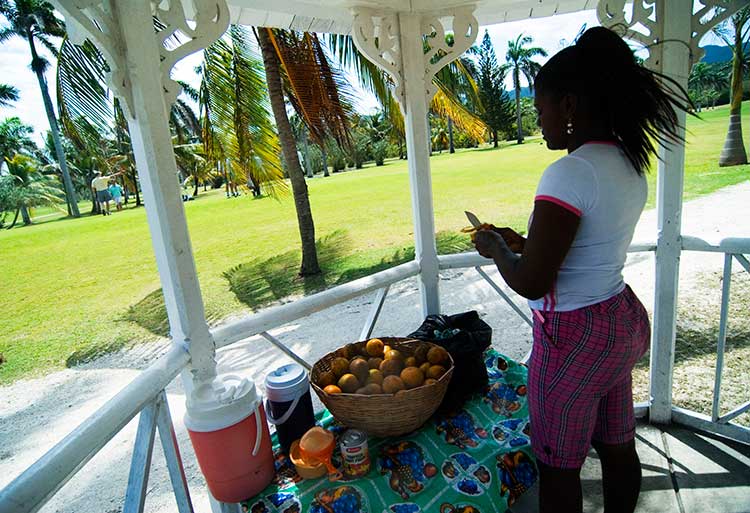
OFF-COURSE ATTRACTIONS & ACTIVITIES
-
No trip to Jamaica is complete without visiting Jamaica’s main attraction, the stunning Dunn’s River Falls. Climb the cascading waterfall and relax in the crystal clear pools at the base of the falls and come away feeling relaxed and refreshed.
-
The rich, black soil of Jamaica’s Blue Mountains (rising some 7,500 feet above sea level), coupled with mist and cool temperatures, make for an environment that produces some of the most sought after coffee in the world. Sample the famous brew, buy some to take back home and visit the region where it’s produced.
-
The Legend of Bob Marley comes alive as you walk through the village of Nine Miles, his birth and final resting place. On a tour you are expertly guided through the very house that Marley lived in as a boy. Watch a film on his life and work and learn more about the life and times of this influential musician - his culture, his passion, and the unique religion of Rastafarianism.
-
Take a tranquil and relaxing 90-minute trip on a bamboo raft down the Martha Brae River.
-
Relax in Negril, the “Capital of Casual” with seven miles of stunningly beautiful white sand beach. This is Jamaica’s watersports centre where you can dive, snorkel, sail, water-ski, windsurf kayak or glide along the coastline by catamaran. Or do nothing but quietly work on you tan in a secluded cove.
-
Rum has been distilled on the Appleton Estate nestled in the fertile Nassau Valley in the parish of St Elizabeth since 1749. Take a tour to learn more about how rum is made and sample the portfolio of award-winning rums. www.appletonestate.com
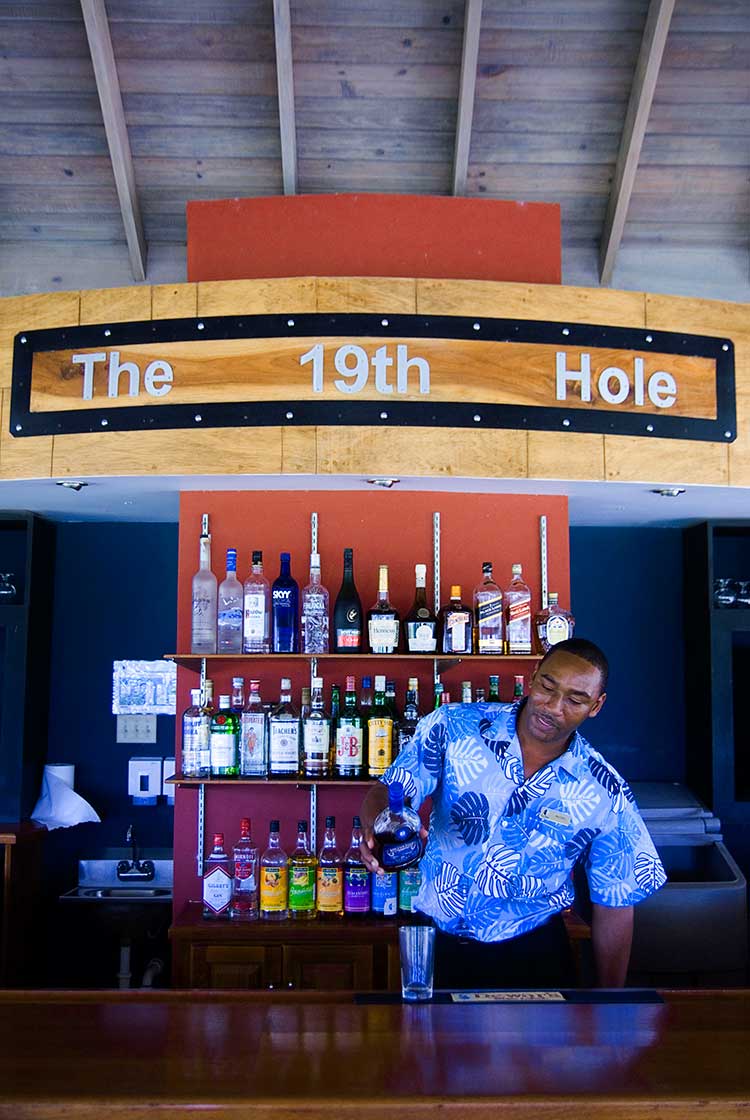
USEFUL CONTACTS & WEB SITES
Visit Jamaica: www.visitjamaica.com